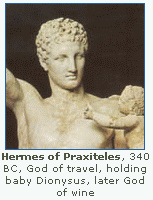Below, my companion and I on the roof of Breeder gallery, accompanied with some artworks and a view on the city.
We couldn't resist visiting one of the most popular art objects in the world: the Acropolis of Athens - the place I learned about from textbooks at school, to which I could finally connect in real life. Even for the skeptics like me who are particularly resistant to touristic objects, it's impossible to be blind to the magic of this place. In the bright and sunny daylight, the whole city was shimmering which was a magnificent effect.
The ancient ruins, and the stones that have been used for the reconstruction of the place.

We truly enjoyed art in various museums in Athens that are so rich with ancient heritage that one can easily get confused without some guidance. I personally liked most the combinations of pieces from different centuries. The display of art pieces, for example in the Benaki museum where the picture below on the left is taken, suggests to read art history not as a linear development but as a layered, more kaleidoscopic structure.
We were also particularly impressed by another spectacular museum in Athens, the Epigraphical Museum, displaying ancient Greek inscriptions (picture of its courtyard below on the right).


By Maija R.






